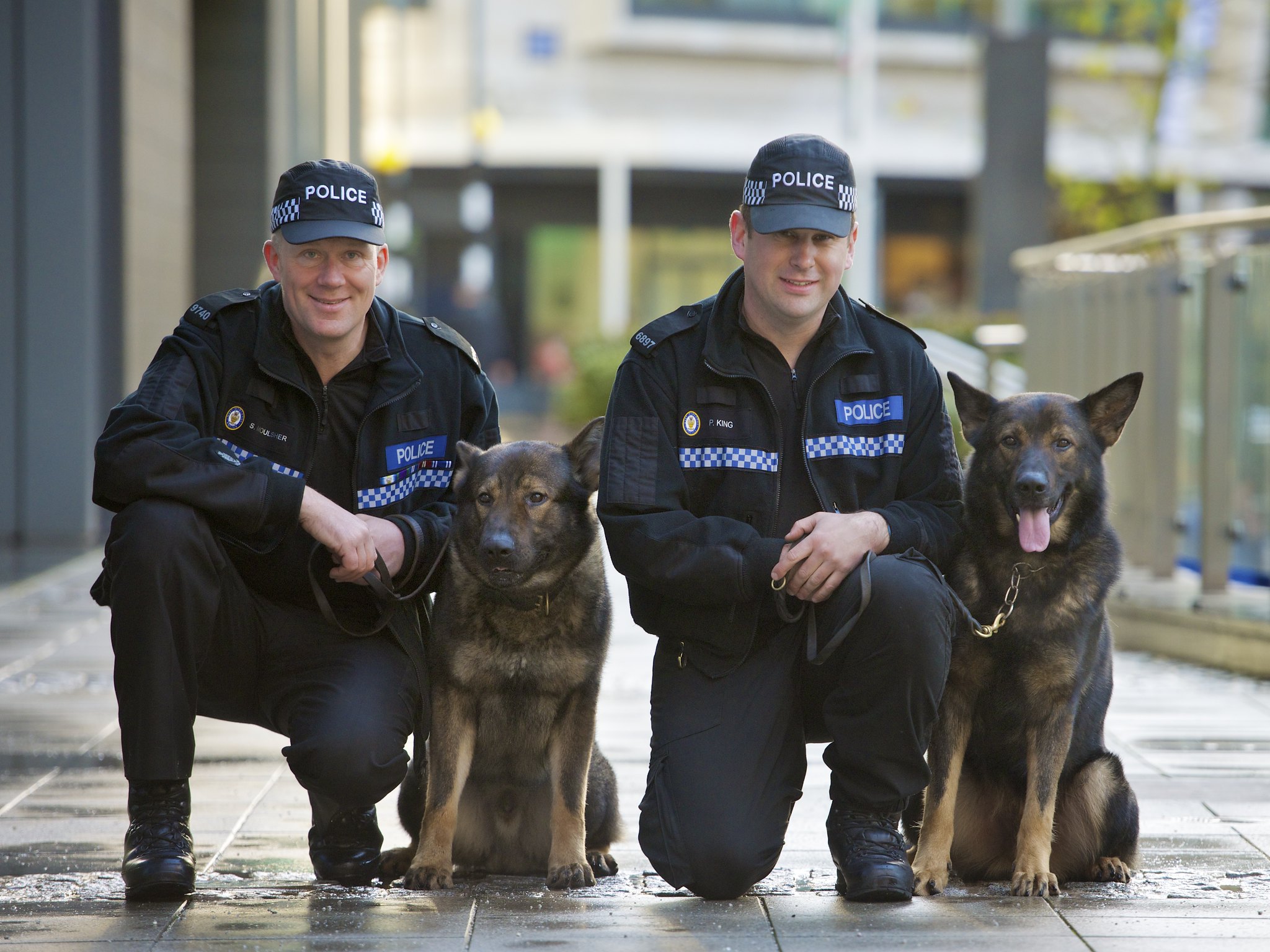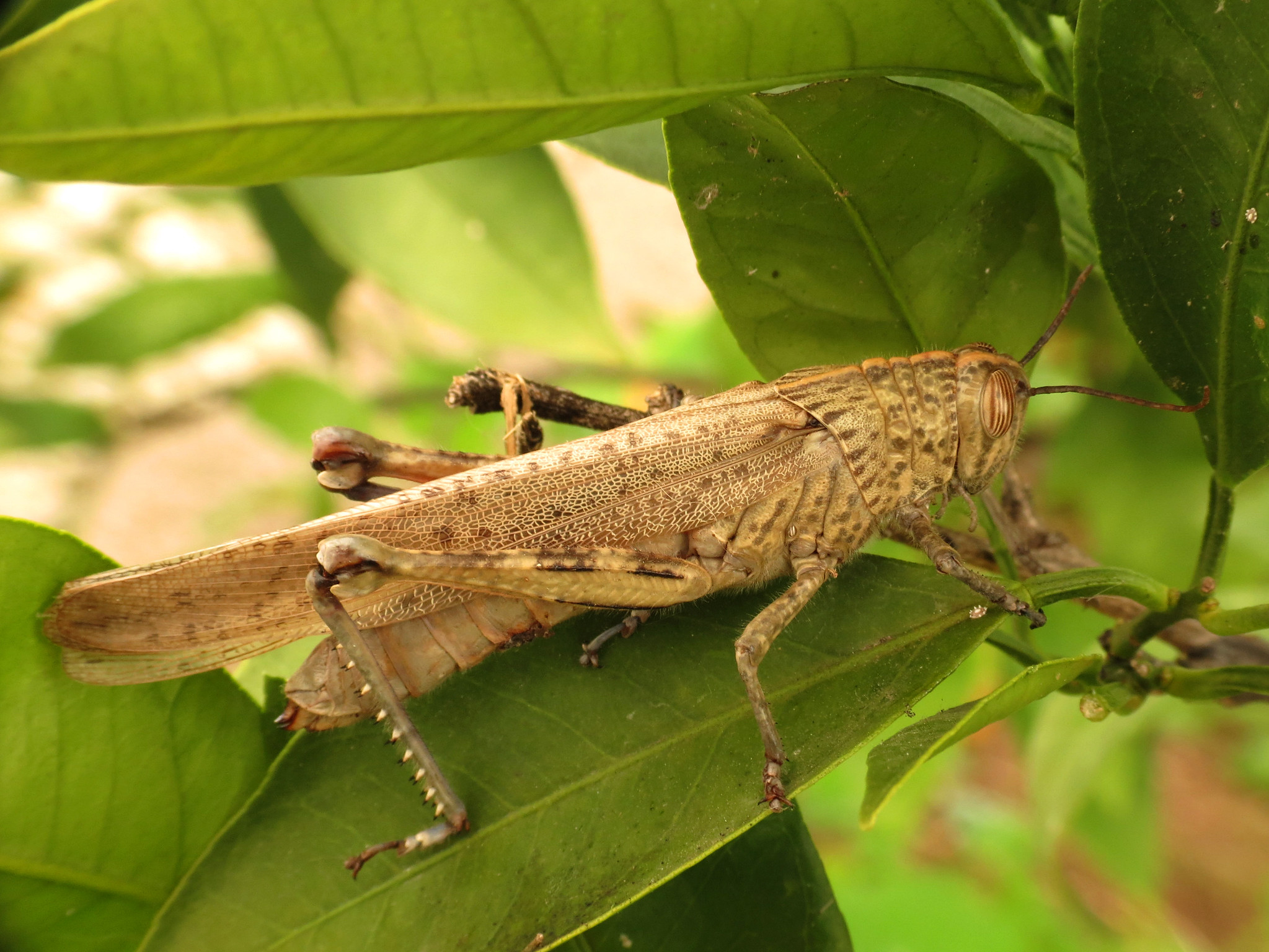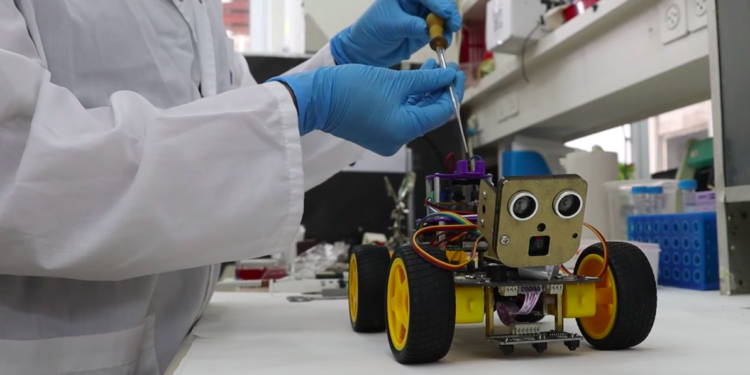Researchers at Tel Aviv University in Israel have developed a bio-hybrid sensor, using a locust antenna in order to create a robot with a hyper-sensitive sense of smell, a new study tells us.
Tel Aviv University first combined robot and biological sensory input in 2021, when researchers connected a locust ear to a robot.
The 2021 experiment was a feat of interdisciplinary engineering, with one lab isolating and characterising the locust ear, and another building the robot and developing code to enable the robot to respond to electronic auditory signals. The third developed “Ear-on-a-Chip”, the device that supplies oxygen and food to the locust ear in order to keep it alive, while extracting and amplifying electrical signals from the organ to transmit them to the robot.
At the time, the researchers focussed on creating a robot with locust hearing because it could be easily compared to existing technologies, while ‘smell’ technologies are less developed and more complex.
Developing the technology they first used in 2021 in creating this robot, Dr Maoz and his colleagues connected the locust antenna and allowed it to smell different odours while they measured the electrical activity that each odour induced. Smells were detected purely through the input that the antenna picked up.
Then they used machine learning in order to create a library of smells, characterising eight odours, that included geranium, lemon and marzipan. After the experiment, they managed to add further smells, and allowed the organ to distinguish between different kinds of whiskey.
Overall, this resulted in a machine with a sensor purportedly 10 000 times more sensitive than other commonly used electronic noses on the market today, and crucially, comparatively user-friendly. This, the study claims, “opens up the future for robust and simple bio-hybrid robotic sensing devices that can be widely deployed.”
This technology could have far-reaching applications. Superhuman olfactory ability is already used across a number of industries, including waste management, medicine, and security, as well as air- and food-quality control.
However, there is still a stark divide between biological and technological noses used commercially.
Researchers have been developing smell technology, known as electronic noses or “eNoses” since 1982, and these are coming into play in waste-management systems, diagnosing disease, and the wine industry, to name but a few applications. Recently, researchers have been investigating the possibility of neuroprosthetic noses in order to treat anosmia, which has become far more widespread in the wake of the Covid-19 pandemic.
However, sniffer dogs are still preferred in policing and security, when it comes to detecting narcotics, explosives, and missing persons. In the last century, they have also been used in conservation work, detecting live wildlife, carcasses (such as those of birds and bats around wind turbines), and scat and pathogens.
Dogs are preferred for a number of reasons, including high sensitivity to smells compared to commercially available eNoses. Smells are essentially determined by volatile organic compounds (VOCs), small molecules that possess a high vapour pressure, which means that they evaporate easily into a gaseous state. Dogs are very sensitive, and able to detect VOCs in very low concentrations.

They also have longer life-spans than their technological equivalents, and are hardier in the face of temperature or humidity.
This is not to mention that eNoses can be cumbersome. Making traditional eNoses small is a very difficult task given the large number of validation samples that they need, in order to create a “scent library,” and the processing power that they require.
Related articles: One Year on, What has the James Webb Space Telescope Seen? | When Listening to Music, Rats Move in Sync With the Beat | AI Can Now Track Emissions Hotspots, Including Individual Plants, Mines, and Even Ships | Are We Alone? NASA Begins New UFO Research
However, sniffer dogs are an imperfect system. Raising and training sniffer dogs is a highly specialised and expensive task. This isn’t to mention their transport and maintenance costs. Training and deploying these animals falls to expert trainers and handlers.
Recently, alternative animals have been looked into in order to fulfil a similar role, with the focus on, as ever, locusts. In 2020, scientists at Washington University published a paper on the applications of wiring the insects up to machines in order to better sniff out explosives. The US Navy provided Baranidharan Raman and his colleagues with a $750 000 grant towards this research.

In December 2022, researchers at Michigan State University published their research on using locust brains to not only smell human oral cancers, but distinguish between different kinds.
The advantages of using biological olfactory systems are obvious, in that they bypass the need to develop technological equivalents. Tel Aviv University’s Dr Maoz said that, “Nature is more advanced than we are, so we should use it.”
Biological systems also require far less processing power than technological equivalents; while a laptop consumes 100 watts per hour, the human brain only uses 20 watts per day.
Furthermore, interpreting the data at the earlier point, using the biological olfactory systems, allows users to interact with the raw data. Sniffer dogs, although they are exceptionally good at detection, are unable to clearly communicate present levels of VOCs, or their certainty in accurately identifying them.
However, one must be wary of overly trusting technological systems that come into place to replace them. User error can leave a huge margin in the way that a commercially viable sensory analyst works. For example, in 2019 the New York Times found that the very breathalysers that are the basis for a million arrests a year in the US, are skewed by poor maintenance and improper calibration. In some cases they yielded results that were 40% higher than they should have been.
Overall, this new biohybrid sensor is a massive leap forward in olfactory technology. However, they don’t exactly hold the deterrent power of a German shepherd at the airport. It remains to be seen how applicable the technology might become in day-to-day use. Although the study describes the new technology as “robust and simple,” it’s hard to imagine commercial uses where a locust antenna has to be maintained and, periodically, one imagines, replaced. However, for military and policing, one can imagine this technology eventually having considerable applications.
Editor’s Note: The opinions expressed here by Impakter.com columnists are their own, not those of Impakter.com — In the Featured Photo: Robot scientists created using a locust antenna to smell. Photo Credit: Tel Aviv University










